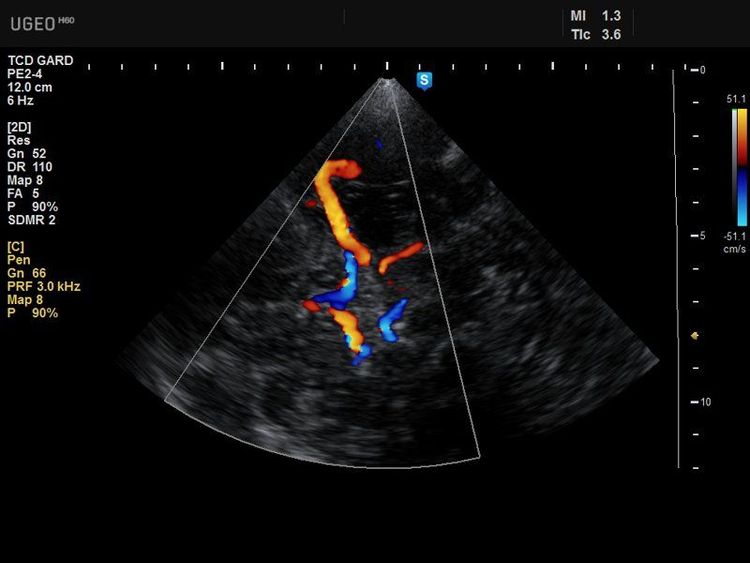This is an automatically translated article.
The article is professionally consulted by Master, Doctor Ton Nu Tra My - Department of Diagnostic Imaging - Vinmec Central Park International General Hospital.Brain stroke is a dangerous condition that can threaten the patient's life or leave many serious sequelae. To diagnose stroke, transcranial ultrasound is a widely applied method because of its high accuracy and safety.
1. An overview of cerebral stroke and transcranial ultrasound
1.1 What is a Brain Stroke? A stroke (also called a cerebrovascular accident) is a sudden loss of blood flow to the brain or bleeding inside the skull, resulting in decreased, lost function, or death of brain cells. Complications of the disease include paralysis, speech disorders, loss of sensation, memory loss, coma, which can lead to death.
Symptoms of a person having a stroke include:
Sudden numbness and weakness of the face or arms or legs, especially on one side of the body; Sudden loss of vision on one or both sides; Sudden disturbance in walking, dizziness, loss of balance, inability to coordinate movements; Sudden confusion, confusion, or inability to understand speech; Sudden unexplained headache. Brain stroke is an urgent medical emergency, so when detecting signs of stroke, it is necessary to immediately transfer the patient to the nearest medical facility to reduce the rate of death and disability. If the patient is treated early, the patient's life can be saved, limiting the sequelae in the future.

1.2 What is Transcranial Ultrasound? Transcranial doppler ultrasound is a procedure that takes advantage of areas where the skull bones are thinner than other sites, so that ultrasound waves can pass through and create images. The ultrasound will capture images of the entire skull. There are three key locations for performing a transcranial ultrasound: the temporal region (check the cerebral arteries), the orbital area (check the ophthalmic and carotid arteries), and the suboccipital region (note the blood flow rate). It is a non-invasive, non-ionizing radiation diagnostic technique that is inexpensive and very convenient. This technique can evaluate stenosis - intracranial occlusion, subarachnoid hemorrhage, extracranial carotid disease,...
2. Transcranial ultrasound - diagnostic criteria for brain stroke
To detect stroke caused by vasospasm after subarachnoid hemorrhage, monitoring by transcranial Doppler ultrasound (Transcranial Doppler or TCD) is the technique widely applied today.
Transcranial Doppler ultrasound uses 2 - 5 MHz sound waves through the skull to evaluate blood flow in the great circulation of the intracranial Willis arteries. The evaluation of the arterial segments studied in the subarachnoid hemorrhagic stroke types helped to obtain baseline mean flow velocities and subsequent trends.

Transcranial ultrasound only measures flow (e.g. blood velocity) but because flow varies over time, based on mean flow velocity trends, the clinician can infer that resistance is body is changing, seen in the case of cerebral vasospasm. The physician may also identify instances of increased flow due to vasopressor therapy (by means of increased cardiac output such as administration of vasopressors and dopamine).
Sensitivity of transcranial Doppler ultrasound in the diagnosis of vasospasm is in the range of 50 - 100%. Accuracy depends on the location, size of the blood vessel, and the skill and experience of the person performing the technique.
Transcranial ultrasound technique plays an important role in the diagnosis of cerebral stroke. And because a stroke is a dangerous condition, when there are signs of disease, the family should immediately take the patient to the doctor for an accurate diagnosis and timely emergency.
Currently, Magnetic Resonance Imaging - MRI/MRA is considered a "golden" tool for brain stroke screening. MRI is used to check the condition of most organs in the body, especially valuable in detailed imaging of the brain or spinal nerves. Due to the good contrast and resolution, MRI images allow to detect abnormalities hidden behind bone layers that are difficult to recognize with other imaging methods. MRI can give more accurate results than X-ray techniques (except for DSA angiography) in diagnosing brain diseases, cardiovascular diseases, strokes,... Moreover, the process MRI scans do not cause side effects like X-rays or computed tomography (CT) scans.\
Vinmec International General Hospital currently owns a 3.0 Tesla MRI system equipped with state-of-the-art equipment by GE. Healthcare (USA) with high image quality, allows comprehensive assessment, does not miss the injury but reduces the time taken to take pictures. Silent technology helps to reduce noise, create comfort and reduce stress for the client during the shooting process, resulting in better image quality and shorter imaging time. With the state-of-the-art MRI system With the application of modern methods of cerebral vascular intervention, a team of experienced and well-trained neurologists and radiologists, Vinmec is a prestigious address for stroke risk screening and screening. reliable goods.
In the past time; Vinmec has successfully treated many cases of stroke in a timely manner, leaving no sequelae: saving the life of a patient suffering from 2 consecutive strokes; Responding to foreign female tourists to escape the "death door" of a stroke;...
Please dial HOTLINE for more information or register for an appointment HERE. Download MyVinmec app to make appointments faster and to manage your bookings easily.














